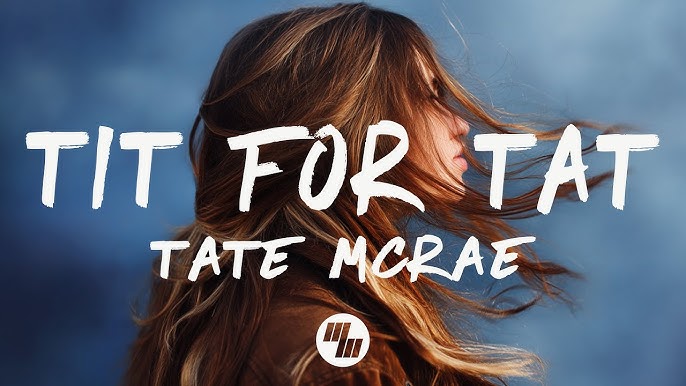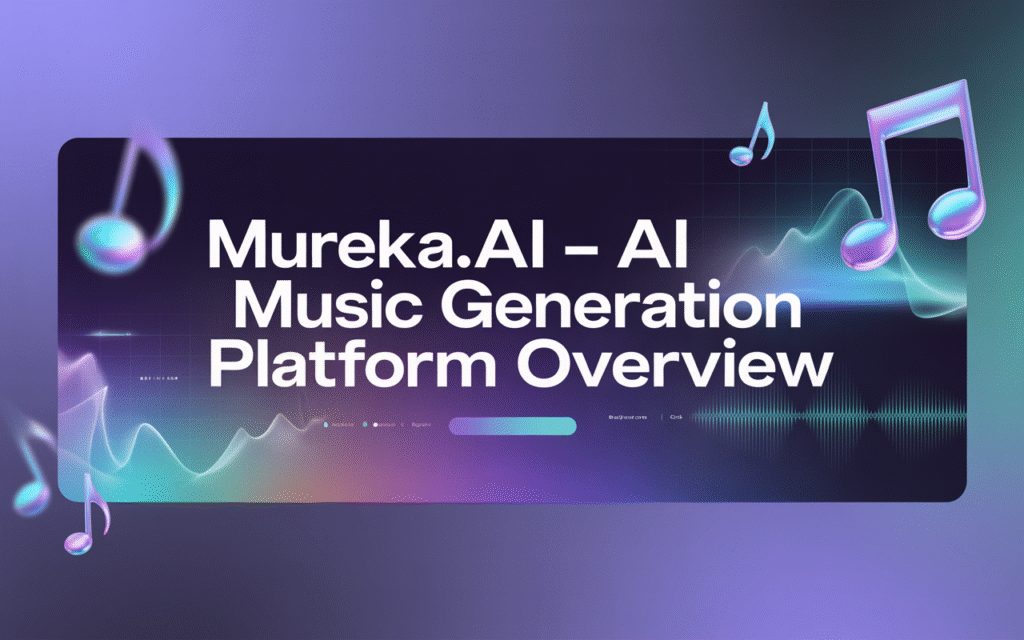As a music producer, I’m always on the lookout for tracks that capture the cultural zeitgeist. Tate McRae’s “Tit for Tat” is one such song. Released in 2024, it quickly became a viral sensation, resonating with millions for its raw honesty and infectious beat. It’s a perfect example of modern pop songwriting.

A Glimpse into “Tit for Tat”
Before we dive deep, let’s look at the core of the song. The Tit for Tat lyrics paint a vivid picture of a toxic, retaliatory relationship where every action prompts an equal and opposite reaction. It’s a narrative of emotional chess, where love is a battlefield. The song was co-written by Tate McRae herself, alongside a team of hitmakers including Ryan Tedder, which speaks to its polished, radio-ready quality.
“You do this, I do that, it’s just tit for tat
Got me lookin’ in the mirror, don’t know how to act
We’re buildin’ up walls, just to watch them collapse
Yeah, you do this, I do that, it’s just tit for tat”
| Attribute | Details |
|---|---|
| Artist | Tate McRae |
| Release Date | May 2, 2024 (2024-05-02) |
| Genre | Pop, Dance-Pop, Synth-Pop |
| Writers | Tate McRae, Ryan Tedder, Alexander 23, Jasper Harris |
| Producers | Ryan Tedder, Alexander 23, Jasper Harris |

Musical Style and Production Analysis
From a production standpoint, “Tit for Tat” is a masterclass in modern pop. It blends elements of dance-pop with the moody, atmospheric synth work that has become a signature of Tate McRae’s sound. Let’s break down what makes it tick.
Instrumentation and Arrangement
The track is built on a foundation of a driving, four-on-the-floor drum machine beat, layered with a pulsating synth bass. This creates an immediate sense of energy and urgency. The verses are more sparse, allowing Tate’s vocals to take center stage, before building into a powerful, synth-heavy chorus. The use of a filtered synth pad in the pre-chorus is a classic pop technique that builds tension beautifully.
| Section | Key Musical Elements | Emotional Impact |
|---|---|---|
| Intro | Filtered synth pluck, atmospheric pads | Intriguing, sets a moody tone |
| Verse 1 | Minimal beat, prominent bassline, lead vocal | Narrative, confessional |
| Pre-Chorus | Rising synth pads, added percussion layers | Builds tension and anticipation |
| Chorus | Full drums, wide synth chords, layered vocals | Energetic, anthemic, cathartic |
| Bridge | Stripped-back instrumentation, ethereal vocals | Reflective, vulnerable |
| Outro | Fading synth melody, lingering vocal ad-libs | Resigned, lingering |
Vocal Production
Tate’s vocal performance is both vulnerable and powerful. The production enhances this duality. In the verses, her voice is intimate and close-mic’d, with a touch of reverb to create space. In the chorus, her vocals are layered and widened, creating a huge, anthemic sound that fills the stereo field. The subtle use of autotune is not for correction but as a stylistic effect, giving her voice that modern, polished pop sheen. This is a great example of how vocal production can serve the song’s emotional arc.

“Tit for Tat Lyrics”: A Deep Dive into the Song Meaning
The phrase “tit for tat” itself implies a cycle of retaliation, and the lyrics explore this concept with painful clarity. The song isn’t just about a breakup; it’s about the destructive patterns that lead to it. I see it as a narrative of two people so caught up in “winning” that they lose the relationship itself.
Narrative and Emotional Arc
The song follows a clear emotional journey. The verses set the scene, describing specific, petty retaliations (“You go out with your friends, so I go out with mine”). The pre-chorus reflects a moment of self-awareness, a realization of the destructive cycle. The chorus is the explosive admission: this is a game of tit for tat, and it’s tearing them apart. The bridge offers a moment of quiet desperation, a plea to break the cycle, but the song ultimately resolves back into the pattern, suggesting the difficulty of escaping such dynamics.
Symbolism and Metaphor
The central metaphor is the game. The relationship is no longer about love but about keeping score. The “walls” they build are symbolic of emotional barriers, constructed for self-protection but ultimately leading to isolation. The act of watching them “collapse” suggests a self-destructive, almost masochistic pleasure in the drama, a common theme in toxic relationships. The lyrics meaning goes beyond a simple fight; it’s about the loss of trust and the weaponization of intimacy.

How to Create a “Tit for Tat” Style Track with Mureka AI
So, you’re inspired by the sound of “Tit for Tat” and want to create something similar? As someone who works with AI music tools daily, I can tell you that platforms like Mureka have made this more accessible than ever. You don’t need a million-dollar studio to capture that vibe. Let’s walk through how you could use an AI music generator to get started.
Ready to Start Your Musical Journey?
Explore the endless possibilities of AI music. Visit our home page to see what’s trending or jump right into creation!Create Music With AI Now

Step 1: Define Your Vibe and Prompt
The first step in any AI songwriting process is to give the AI clear instructions. Mureka’s text-to-music feature is perfect for this. You’d start with a prompt that captures the essence of “Tit for Tat.”
A good prompt might be: “A modern dance-pop track in the style of Tate McRae. Moody synth-pop with a driving beat, pulsating bassline, and emotional female vocals. The song should be about a toxic relationship, with a tempo of 120 BPM in the key of A minor.”
| Element | Prompt Example | Why it Works |
|---|---|---|
| Genre/Style | “dance-pop, synth-pop, moody, atmospheric” | Specifies the exact sonic palette. |
| Instrumentation | “pulsating synth bass, four-on-the-floor drums, wide synth pads” | Guides the AI on the core instrumental layers. |
| Vocal Style | “emotional, slightly breathy female vocals” | Defines the vocal character. |
| Theme/Mood | “about a toxic relationship, melancholic but energetic” | Sets the emotional tone for the lyrics and melody. |
Step 2: Generate and Refine
Once you input your prompt, Mureka will generate a few variations. This is where your role as a creator comes in. Listen to the options. Maybe one has the perfect drum groove, while another has a killer synth melody. With Mureka’s Pro plan, you can download these as stems (individual tracks for drums, bass, vocals, etc.). This allows you to mix and match the best parts in your own DAW (Digital Audio Workstation) like Ableton or Logic Pro.

Step 3: Add Your Human Touch
This is the most crucial part. The AI gives you a fantastic starting point, but the magic happens when you add your unique creativity. You could:
- Rewrite the Lyrics: Use the AI-generated lyrics as a placeholder and write your own story.
- Record Your Own Vocals: Use the AI melody as a guide and sing it yourself to add genuine emotion.
- Tweak the Arrangement: Use the stems to build your own song structure, adding drops, builds, and transitions that feel right to you.
This hybrid approach is the future of AI music creation. It’s not about replacing the artist; it’s about providing a powerful new tool for inspiration and efficiency.

Expanding the Horizon: AI Music Trends and Principles
The technology behind Mureka and other AI music platforms is evolving at an incredible pace. As a researcher in this field, I’m fascinated by both its capabilities and its implications. Understanding the “how” can make you a better creator.
How Does AI Actually “Learn” Music?
At its core, AI music generation relies on deep learning models, particularly architectures like Transformers and Generative Adversarial Networks (GANs). Here’s a simplified breakdown:
- Training Data: The AI is fed a massive dataset of music—thousands of hours of songs across all genres. It analyzes everything from melody and harmony to rhythm and instrumentation.
- Pattern Recognition: The model learns the statistical relationships between musical elements. For example, it learns which chords commonly follow others in a pop song or what drum patterns are typical in hip-hop.
- Generation: When you give it a prompt, the AI uses these learned patterns to generate a new piece of music that is statistically likely to “make sense” within the parameters you’ve set.
| Model Type | Function | Use Case in Music |
|---|---|---|
| Transformers | Processes sequential data, understanding context over long sequences. | Excellent for generating coherent melodies and long-form compositions. |
| GANs (Generative Adversarial Networks) | Two networks (a generator and a discriminator) compete to create realistic outputs. | Often used for creating high-fidelity audio and realistic instrument sounds. |
| VAEs (Variational Autoencoders) | Learns a compressed representation of data to generate new variations. | Good for creating variations on a theme or blending musical styles. |
The Trend of Hyper-Personalization
One of the most exciting trends is the move towards hyper-personalized music. Imagine an AI that can generate a soundtrack for your life in real-time, adapting to your mood, location, and activity. While we’re not quite there yet, platforms are already incorporating personalization. Mureka, for instance, allows you to upload reference tracks or even hum a melody, guiding the AI to create something that is truly unique to your vision. This is a significant leap from generic, prompt-based generation.

Conclusion: The Synergy of Human and Artificial Creativity
Tate McRae’s “Tit for Tat” is a brilliant piece of modern pop—emotionally resonant and expertly produced. It serves as a perfect case study for the kind of music that is both commercially successful and artistically compelling. As we’ve explored, the elements that make it great—the structure, the instrumentation, the emotional arc—can be analyzed and understood.
What’s truly exciting is that tools like Mureka now empower creators of all levels to experiment with these elements. By using an artificial intelligence song maker, you can rapidly prototype ideas, find new inspiration, and learn the fundamentals of what makes a song like “Tit for Tat” work. The future isn’t about AI versus human artists; it’s about the incredible new music that will be born from their collaboration.
Frequently Asked Questions (FAQ)
1. What is the main song meaning of “Tit for Tat”?
The primary song meaning of “Tit for Tat” revolves around a toxic relationship caught in a cycle of revenge and retaliation. The lyrics describe how each partner’s negative action is met with an equally hurtful response, leading to emotional destruction and an inability to communicate or trust.
2. Is “Tit for Tat” based on Tate McRae’s real life?
While artists often draw from personal experience, Tate McRae has not explicitly confirmed that the song is about a specific personal relationship. Like much of her work, it captures a relatable, universal feeling of frustration and heartbreak in modern romance, which is a key reason for its popularity.
3. How much does Mureka cost?
Mureka offers several subscription plans. As of late 2025, the Basic plan is approximately $8/month (billed annually), offering a generous number of song generations for casual creators. The Pro plan, around $24/month (billed annually), unlocks advanced features like WAV downloads, stem separation, and voice cloning, catering to professional musicians and producers. You can find the most current pricing on their official website.
| Feature | Basic Plan (~$8/mo) | Pro Plan (~$24/mo) |
|---|---|---|
| Monthly Song Credits | ~400 Songs | ~1,600 Songs |
| Audio Quality | MP3 | MP3, WAV, Stems |
| Commercial License | Yes | Yes |
| Voice Cloning | No | Yes |
| Reference Audio Upload | No | Yes |
4. Can I legally use music I create with Mureka in my YouTube videos?
Yes! One of the biggest advantages of using a platform like Mureka is that it provides a commercial license for the music you generate. This means you can use the tracks in your projects—like YouTube videos, podcasts, or social media content—without worrying about copyright strikes. It’s a game-changer for content creators who need a steady supply of quality, royalty-free music.
5. What makes an AI music generator different from just using sample packs?
While both provide musical building blocks, an AI music generator is fundamentally different. Sample packs offer a finite library of pre-recorded loops and sounds. An AI, on the other hand, generates entirely new musical ideas based on your input. It can create unique melodies, chord progressions, and arrangements that don’t exist anywhere else, offering a much higher degree of originality and customization.
This report is for informational and educational purposes only.
The views and opinions expressed in this article are those of the author and do not necessarily reflect the official policy or position of any other agency, organization, employer, or company.
All data and information provided are accurate to the best of our knowledge as of 2025-11-04, but there may be omissions, errors, or mistakes.
